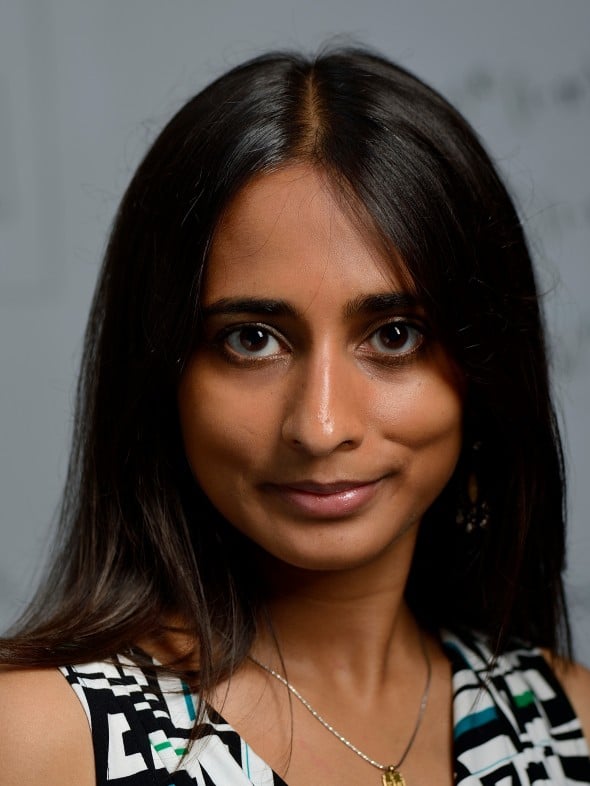
Archana Venkataraman
33
John Hopkins University
Country of birth: US
We still don’t know much about neurological disorders. She’s using AI to change that.
Archana Venkataraman is using artificial intelligence to better map the human brain—and to develop entirely new ways to diagnose and treat neurological disorders.
Despite decades of research, we have only a basic understanding of disorders such as epilepsy, autism, Alzheimer’s, and schizophrenia, and thus a limited ability to treat them. Most therapies are administered on a trial and error basis, guided by a physician’s instinct. Many of them regularly fail.
Informed by data from existing imaging technologies—including the electroencephalogram, or EEG, and functional magnetic resonance imaging, or fMRI— Venkataraman develops mathematical models designed to unlock the “black box” of the brain’s function and provide the building blocks for treatments that are less invasive and far more precise. Her most groundbreaking work targets epilepsy, which affects more than 50 million people globally. Roughly 30% of epilepsy patients do not respond to medication and thus require surgery—which can only work after the seizure onset zone has been successfully isolated to a specific region of the brain.
Data-driven models that pinpoint seizure onset, Venkataraman believes, can limit invasive monitoring and improve surgical outcomes. She has developed a seizure-detection algorithm, which is being evaluated on clinical data from Johns Hopkins. This algorithm uses EEG data and employs methods of deep learning to track the time and location of seizure onset in patients’ brains.
